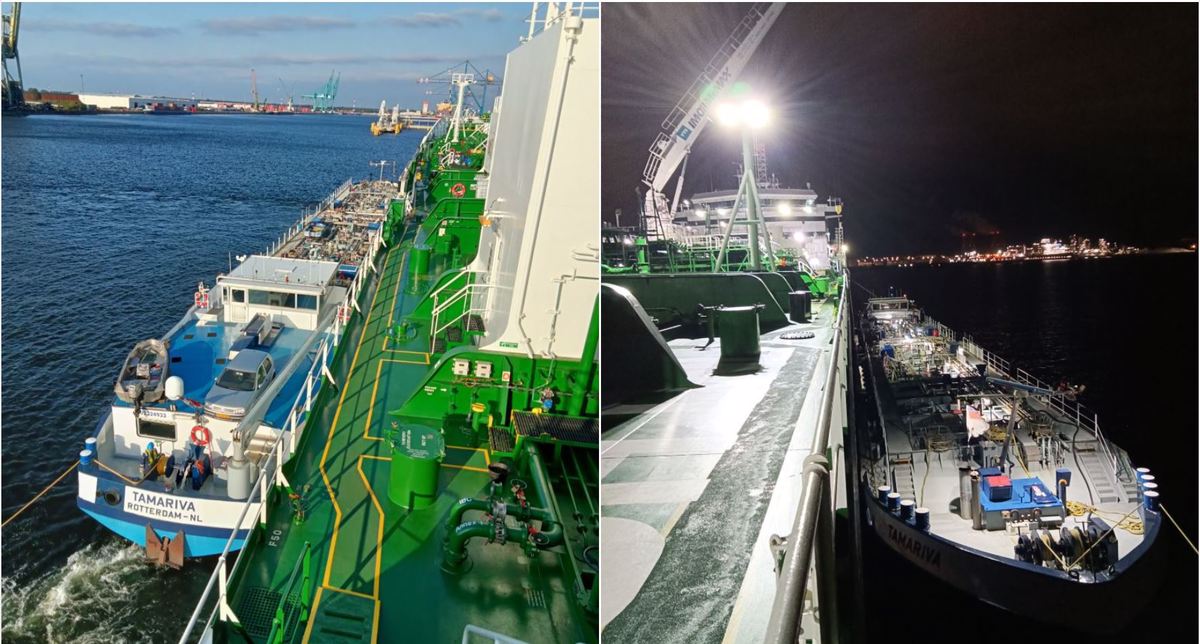EU Commission allocates funds for green bunkering infrastructure projects
The European Commission will grant €1 billion ($1.08 billion) in funding towards the development of alternative infrastructure projects along the Trans-European Network of Transport (TEN-T).
 PHOTO: The first barge-to-ship methanol bunker operation at the ARA port of Antwerp in Belgium. LinkedIn of Port of Antwerp
PHOTO: The first barge-to-ship methanol bunker operation at the ARA port of Antwerp in Belgium. LinkedIn of Port of Antwerp
For shipping, projects focussing on the deployment of ammonia and methanol bunkering infrastructure along TEN-T ports will be eligible for funding. Shore power projects will also be eligible.
Greener variants of ammonia and methanol have zero-emission potential when produced using renewable energy and green hydrogen as feedstock. The lack of bunkering infrastructure for these fuels, however, appears to be one of the major factors impeding their widespread commercial uptake.
However, a number of shipping companies have shown considerable interest in using these fuels when they become available commercially.
According to DNV’s alternative fuel vessel tracker, there are currently 14 confirmed ammonia-capable vessel orders for deliveries scheduled towards 2026, of which eight are bulk carriers, three are gas tankers, two are tugboats and one is a container ship.
There are currently 31 methanol-capable vessels in operation and another 236 on order for deliveries scheduled towards 2028. As of today, most methanol-capable vessels are chemical tankers, but by 2028, the number of container ships on order (167) is set to exceed this figure.
The commercial use of alternative fuel vessels will also require a higher number of bunkering ships. There is only one bunker vessel in operation for methanol at the moment, but eight more will be delivered by 2025, the DNV database shows. There are currently no orders for bunker vessels for ammonia. Nevertheless, Azane and Amogy are evaluating the technical feasibility of integrating ammonia propulsion onboard a bunker vessel.
Next December is the final deadline for applicants to submit proposals for funding to the EU Commission. Submitted proposals will be evaluated jointly by the European Commission and the European Climate, Infrastructure and Environment Executive Agency (CINEA).
By Konica Bhatt
Please get in touch with comments or additional info to news@engine.online





